There’s an ache that hits the second a flight departs the islands, and it tastes like shoyu, smoke, and sun. Hawaiians know the feeling: a craving that mainland substitutes never quite satisfy, no matter how many stores you try. This list dives into the beloved dishes that define home—comforts woven from plantation history, island terroir, and family potlucks. Read on, and you’ll understand why one bite can be a one-way ticket back to aloha.
Spam Musubi

Spam musubi is the edible love letter of Hawaii: salty, sweet, portable, and perfect for beach days or gas station runs. Thick slices of pan-fried Spam caramelize in shoyu and sugar, then hug a block of warm rice beneath a belt of crisp nori. Mainland imitations often miss the precise balance of glaze and grain, the way fresh-cooked rice steams under seaweed. For locals, that first bite recalls after-school snacks, surf breaks, and aunties wrapping dozens for potlucks. It’s comfort engineered for the hand, nostalgia wrapped in nori, and a reminder that simple things, seasoned right, can taste like home.
Plate Lunch

The Hawaiian plate lunch is a symphony of comfort: two scoops of rice, a creamy macaroni salad, and a hearty main that fuels the day. Choices range from chicken katsu to kalua pork or teriyaki beef, each glazed, fried, or slow-cooked to satisfy big appetites. It’s plantation history in a box, blending Asian, Polynesian, and American influences. Mainland versions skew lighter or fussier, missing that unapologetic generosity. Locals crave the texture contrasts—crispy, creamy, saucy, and starchy—alongside flavors that hit salty-sweet just right. Opening the lid releases a cloud of steam and memory, a midday hug that tastes like home.
Loco Moco

Loco moco satisfies deep, primal hunger: rice piled high, a juicy hamburger patty, glossy brown gravy, and a runny egg cascading over everything. It’s messy in the best way, a forkful that blends yolk with savory sauce and soft grains. Hawaiians miss the gravy most—silky, beefy, slightly sweet, clinging to every bite. Mainland diners often dilute it or forget the yolk’s crucial richness. This dish tastes like late-night diners, after-surf comfort, and family breakfasts where conversation pauses for the perfect spoonful. It’s proof that simple ingredients, stacked smartly, can cradle a tired soul back to life.
Kalua Pig

Kalua pig carries the soul of the islands, smoke-laced and tender from hours in an underground imu. The meat gently shreds, threads of pork glistening with natural juices and a kiss of sea salt. It’s the taste of luaus, family reunions, and patient cooking that honors ancestors. Replicating it on the mainland is tough; oven versions lack the earthy, wood-smoke depth. Hawaiians miss that primal aroma drifting through palms and the way the pork melts into rice. Each bite evokes hula, laughter, and shared plates under string lights. Kalua pig is celebration food, humble yet profound, unmistakably home.
Huli Huli Chicken

Huli Huli chicken is backyard barbecue Hawaiian-style, lacquered with a shoyu, ginger, and brown sugar glaze that caramelizes into sticky perfection. “Huli” means to turn, and turning keeps the chicken juicy while layering smoky sweetness. Locals crave the roadside stands where the aroma pulls you off the highway. Mainland versions often skip the pineapple kiss or ginger snap that brightens the sauce. The first bite? Charred edges, succulent meat, and a glaze that sings salty-sweet-tangy. It’s fundraisers, beach park cookouts, and finger-licking joy. One whiff of that smoke and you’re instantly transported back to island weekends.
Saimin

Saimin is Hawaii’s own noodle comfort, born from plantation-era fusion and perfected at mom-and-pop counters. The broth is light yet savory, a dashi-like canvas for curly noodles, kamaboko, char siu, and green onions. It’s gentler than ramen but deeply satisfying, especially with a side of teriyaki sticks. On the mainland, substitutions skew heavy, masking the delicate balance that makes saimin sing. Hawaiians miss slurping between swim sessions, the clatter of counter stools, and the kindness of aunties topping off bowls. It’s rainy-day warmth in a spoon, proof that “simple” can be its most comforting.
Shave Ice

Hawaiian shave ice isn’t a snow cone; it’s silk. Ultra-fine ice absorbs bright syrups—lilikoi, guava, coconut—and turns into shimmering tropical snow. Add a scoop of vanilla or azuki beans beneath, finish with a snow cap of condensed milk, and sprinkle li hing for tangy contrast. Mainland versions use coarse ice that crunches instead of melting. Locals crave that first airy spoonful and the way flavors bloom in cool, slow waves. It tastes like sunburned cheeks, sandy flip-flops, and sticky smiles. Every drip down the cup is a postcard from summer, signed aloha.
Poke
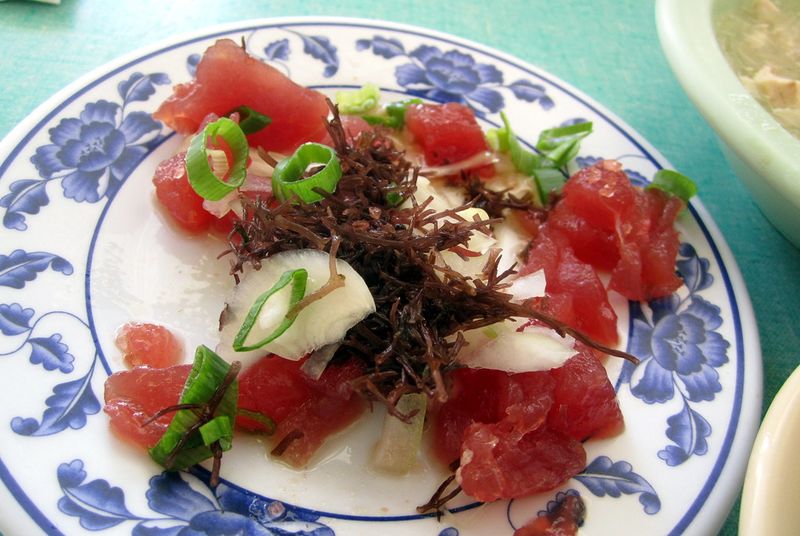
Poke in Hawaii means just-cut fish, seasoned simply so the ocean still speaks. Ahi cubes glisten with sesame oil, shoyu, sweet onion, and limu, sometimes dusted with inamona for depth. Locals buy it by the pound from markets where the fish practically vibrates with freshness. Mainland poke bowls often smother toppings, losing purity and texture. Hawaiians miss scooping pure ahi over warm rice and tasting clean sweetness followed by briny crunch. It’s a beach cooler staple, a pre-sunset ritual, and the flavor of clear water mornings. Freshness is everything; anything less feels like static.
Manapua
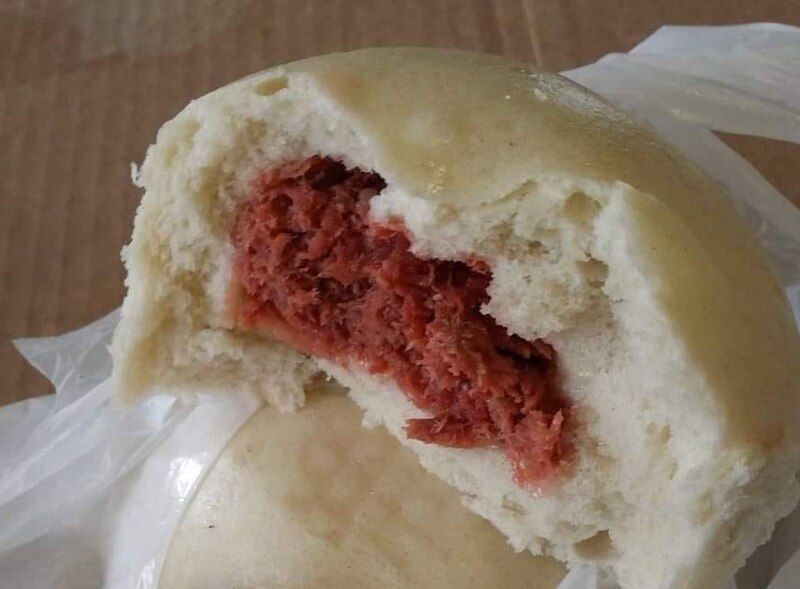
Manapua, Hawaii’s take on char siu bao, fuels errands and after-school walks. Puffy steamed buns or golden baked domes hide fillings like sticky-sweet char siu, curry chicken, or sweet black sugar. The joy is in the heft, the way steam escapes when you tear one open. Mainland buns rarely hit that pillowy chew or balanced sweetness. Locals miss brown paper bags warm with fragrance, Chinatown stops, and the choice between baked or steamed. It’s a pocket-sized meal, portable comfort, and family tradition wrapped in soft dough. One bite, and the island cadence returns.
Malasadas

Malasadas are sugar-dusted clouds, fried to golden perfection and often filled with haupia, custard, or lilikoi creams. Biting through the delicate crust releases steam and a tender, stretchy crumb that feels like a hug. The secret is frying fresh and eating hot, a ritual Hawaii takes seriously. Mainland versions often sit too long, losing lift and soul. Locals crave that first burn-your-fingers bite and the inevitable sugar on the shirt. It’s morning indulgence, post-church tradition, and carnival delight rolled into one. Malasadas make any day feel like a holiday.
Lau Lau

Lau lau is slow, tender comfort: pork and butterfish wrapped in taro leaves, bundled in ti, and steamed until meltingly soft. The taro leaves transform into silky, spinach-like layers infused with savory juices. It’s earthy, oceanic, and deeply satisfying, especially with a sprinkle of Hawaiian sea salt. Mainland attempts often skip butterfish or overcook the greens, losing balance. Hawaiians miss opening that fragrant parcel and watching steam curl into the air. Lau lau tastes like Sunday dinners and respect for old methods. Each bite feels ancestral—humble ingredients elevated through patience and care.
Haupia
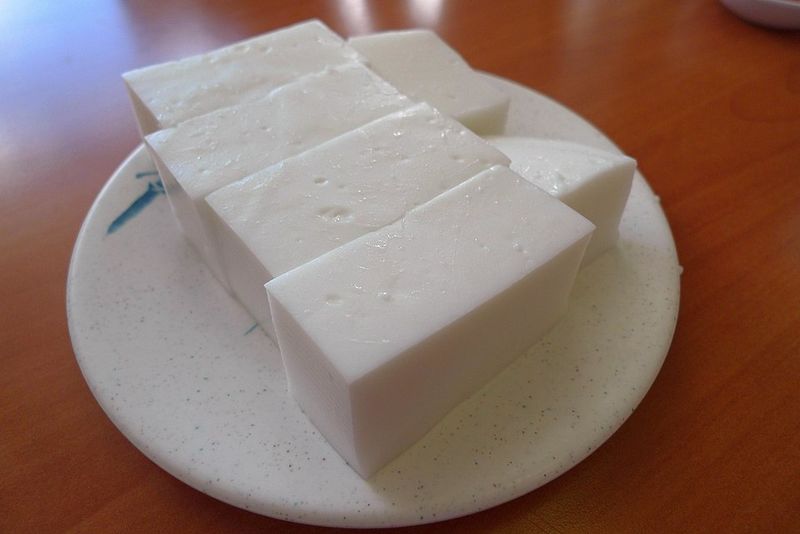
Haupia is coconut serenity: a lightly sweet, softly set pudding that wobbles with tropical grace. Its minimal ingredients—coconut milk, sugar, and thickener—shine when balanced just right. Hawaiians love it at luaus, plate lunches, and potlucks, where cool cubes cleanse the palate after rich meats. Mainland versions often turn rubbery or too sweet. The perfect haupia feels refreshing, creamy, and clean, with a hint of ocean breeze in its simplicity. One chilled bite transports you to shady palms and slow afternoons, proving dessert doesn’t need fireworks to be unforgettable.
Li Hing Mui Treats
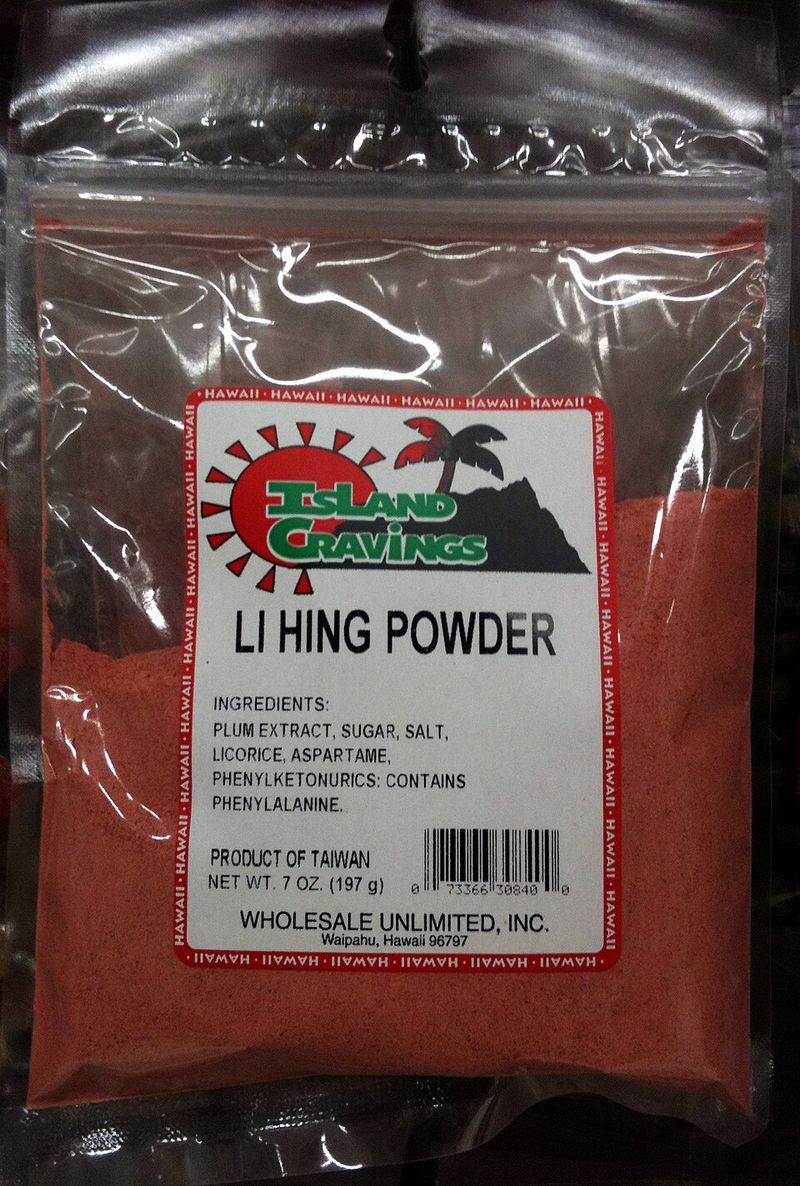
Li hing mui, the salty-sour-sweet plum powder, electrifies snacks with a uniquely Hawaiian twist. Sprinkle it on pineapple, dust gummies, or rim lemonades for a tang that wakes every taste bud. Hawaiians develop lifelong cravings for that addictive contrast—fruity brightness against umami depth. Off-island, the powder can be hard to find or oddly blended, never quite the same. Locals miss red-stained fingers, puckered smiles, and the playful burn on the tongue. It’s childhood and road trips in a shaker bottle, proof that a dusting of nostalgia can transform anything into island candy.
Coco Puffs (Liliha-style)

Liliha-style coco puffs are Honolulu icons: choux shells filled with rich chocolate pudding and crowned with buttery chantilly frosting. The contrast thrills—cool, silky filling against sweet, nutty frosting that melts slowly. Hawaiians swear no mainland pastry hits the same balance of lightness and indulgence. Each puff feels celebratory, whether snagged after work or boxed for birthdays. Away from home, people crave that specific chantilly’s flavor, impossible to replicate without the bakery’s secret touch. One bite and streetlights, late-night chatter, and warm bakery glow come rushing back. It’s nostalgia you can eat, delicate yet decadent.
Chicken Katsu Curry
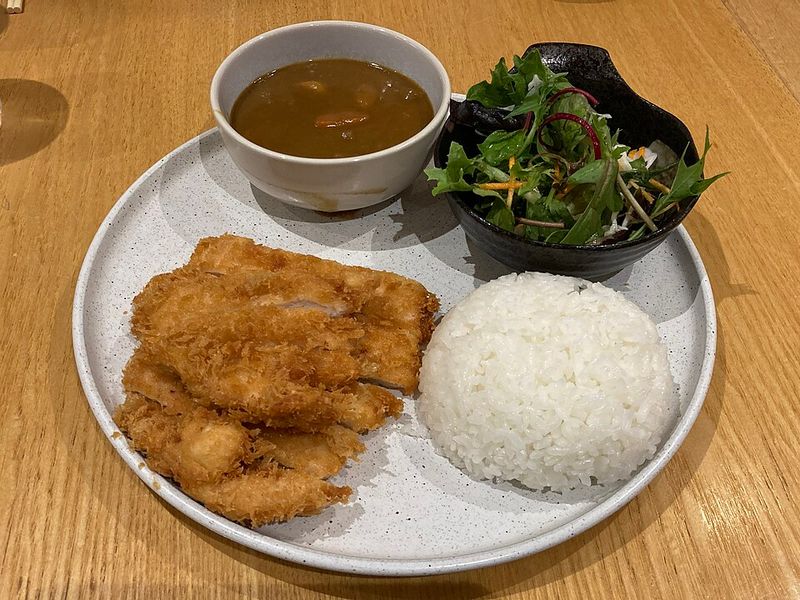
Chicken katsu curry marries Japanese comfort with local appetite: a crackling panko-cutlet draped in thick, gently spiced curry. The sauce is mellow yet magnetic, pooling into rice and clinging to each crunchy slice. Hawaiian spots nail the texture—cutlet stays crisp under generous gravy. Off-island, curry can run thin and flavor-shy. Locals miss the cafeteria trays, extra fukujinzuke, and the reliable joy of spoon-and-knife teamwork. It’s rainy-day fuel and exam-week salvation, a dish that makes everything feel manageable. Every bite promises warmth, crunch, and that friendly neighborhood diner vibe.
Adobo Fried Rice
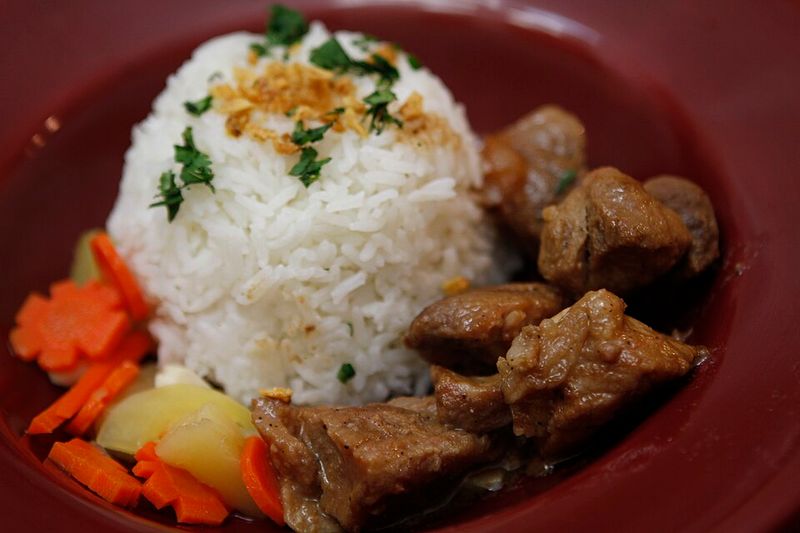
Adobo fried rice upgrades leftovers into legend, combining garlicky Filipino adobo with day-old rice for a savory, tangy, addictive meal. The pan sears little crispy bits while vinegar brightness cuts through richness. Hawaiian kitchens turn this into breakfast with a fried egg or lunchtime fuel on the go. Mainland versions often miss the balance of acid and umami. Locals crave that unmistakable adobo perfume and the comfort of repurposed magic. It’s thrifty, tasty, and deeply local—born of sharing cultures and practical smarts. One bowl, and you remember why Hawaii’s foodways are genius.
Garlic Shrimp (North Shore)
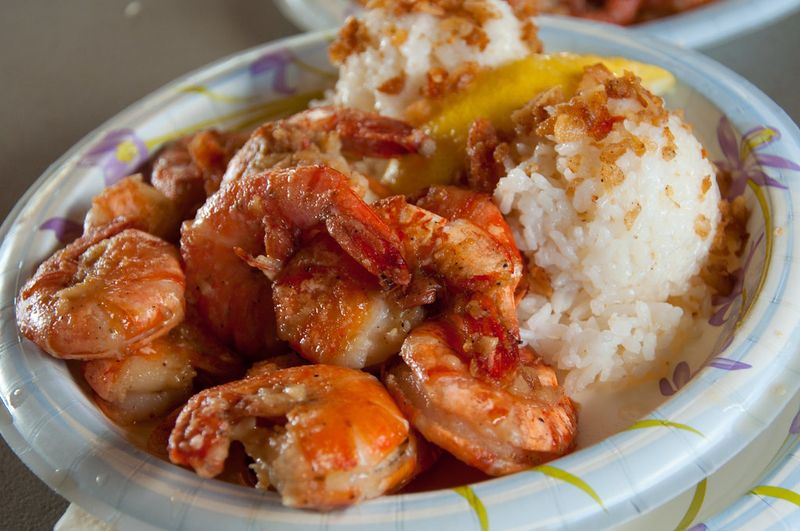
North Shore garlic shrimp is a road trip ritual: shells-on prawns bathing in garlicky butter, piled beside rice that soaks up every drop. The sauce is unapologetically intense—chunks of garlic, a touch of spice, and lemon’s bright snap. Food-truck picnic tables, sticky fingers, and ocean wind complete the experience. Off-island plates often go timid, smoothing away the punch. Hawaiians miss the indulgence and the drive, where anticipation builds with every mile. It’s messy, fragrant, and memorable, a perfect union of sea sweetness and bold seasoning that tastes like freedom.
Butter Mochi
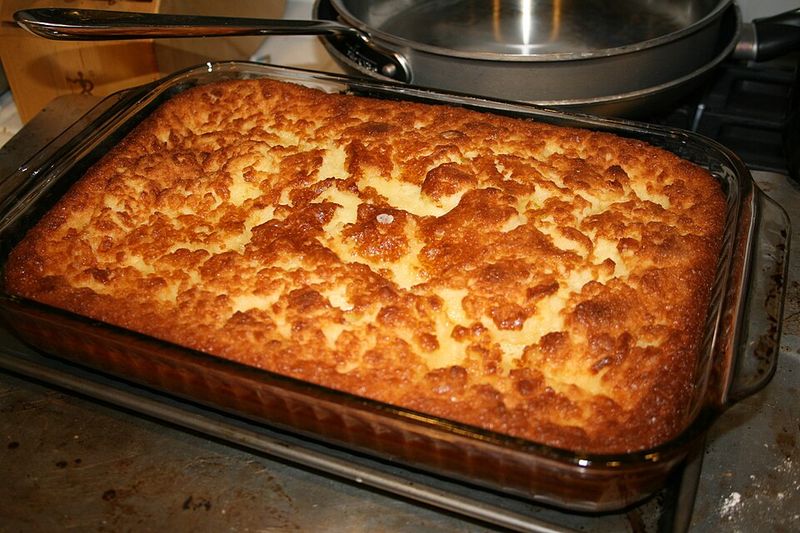
Butter mochi is potluck royalty: chewy, buttery, and coconut-kissed squares that vanish faster than you can plate them. Made with mochiko, it bakes into a custardy chew unlike any brownie or cake. Hawaiians love its simplicity and how it travels well, fitting every gathering from keiki birthdays to office parties. Mainland versions can skew dry or overly sweet. Locals miss the balanced richness and that signature bouncy bite. It’s the taste of handwritten recipes and well-worn 9×13 pans, proof that comfort often arrives in golden squares.
Pipikaula

Pipikaula, the Hawaiian-style jerky born of paniolo culture, balances chew and tenderness with a sweet-salty glaze. Marinated beef is sun-dried or dehydrated, then briefly grilled to awaken caramelized edges. The result is snackable, meaty, and perfect with cold beers or poi. Off-island, jerky skews overly dry or spiced, missing that shoyu-sugar harmony. Hawaiians miss the ranch stories embedded in each bite and the communal plate passed around at gatherings. It’s history you can gnaw on—rugged yet refined, honest in flavor, and deeply local.
Poi

Poi is the heartbeat of Hawaiian cuisine, pounded taro that whispers of land, water, and time. Its gentle tang and silky texture complement rich foods like kalua pig and lomi salmon. To locals, poi isn’t just food; it’s culture—kalo and family tables. Mainland palates sometimes balk, but once you connect, it’s irreplaceable. Hawaiians miss the freshness, the slight ferment, and the sense of continuity with each scoop. Eaten with fingers, it’s intimate, grounding, and nourishing in ways beyond calories. Poi brings balance, a quiet center in a feast.
Lomi Salmon
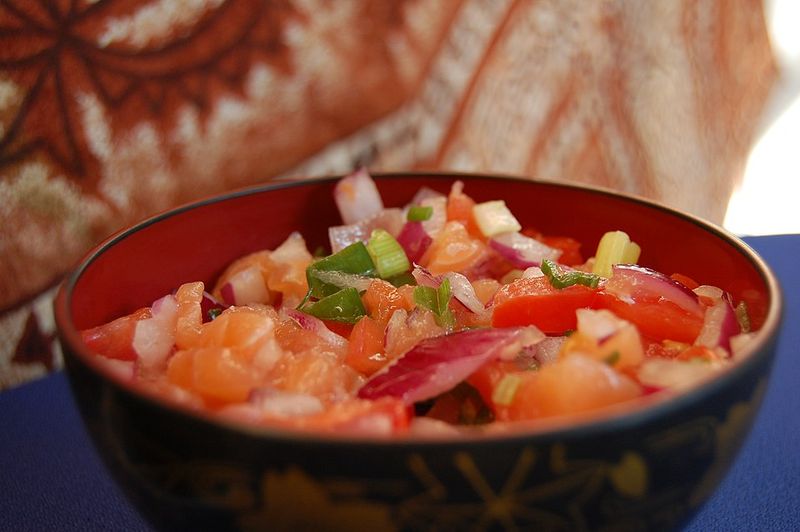
Lomi salmon refreshes the palate with cool, salty brightness: diced salted salmon tossed with tomatoes and sweet onions. Served chilled, it cuts through heavy dishes and sings alongside poi. The key is balance—salinity, sweetness, acidity, and crunch. Mainland attempts often swap fish or forget the chill, losing sparkle. Hawaiians miss the luau spread where lomi glows ruby beside leafy greens. It’s scoopable sunshine, proof that small bowls can carry big breezes. One forkful, and you taste trade winds and laughter.

